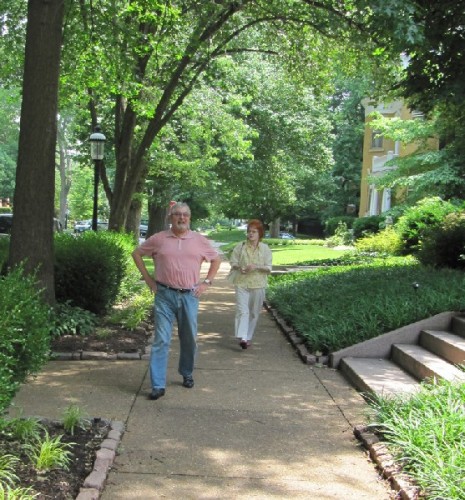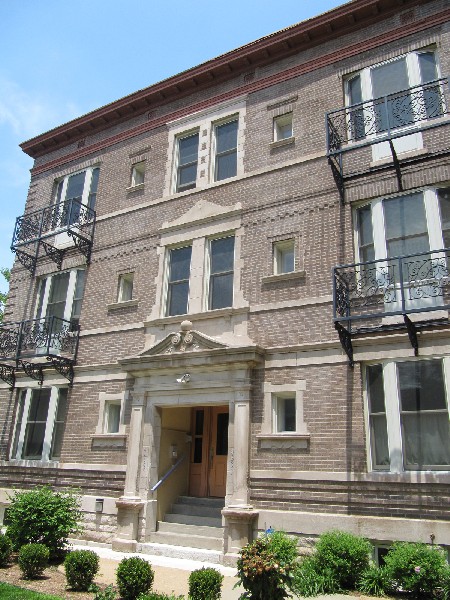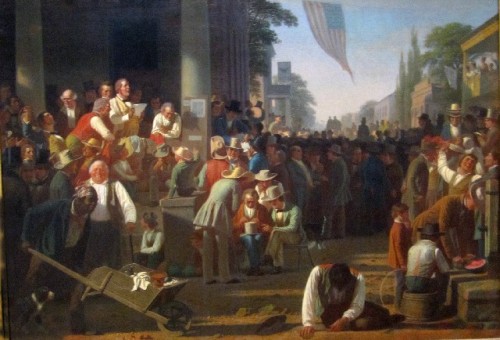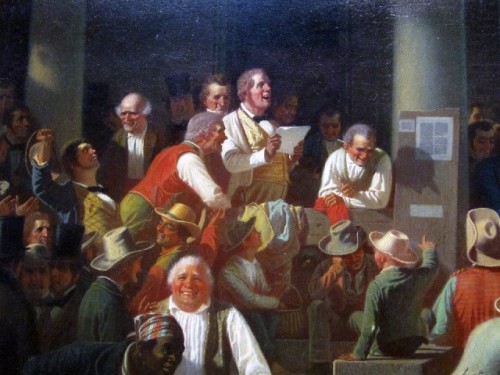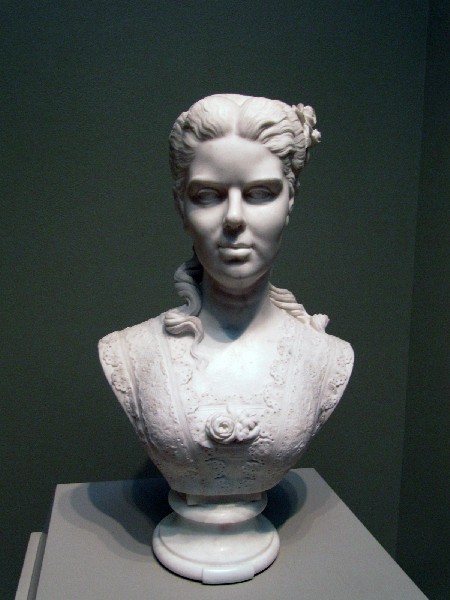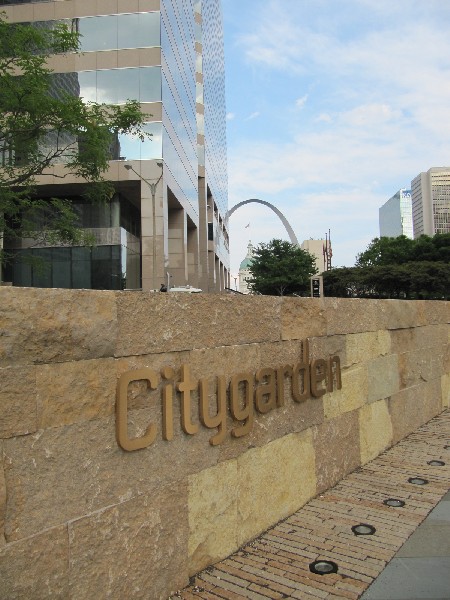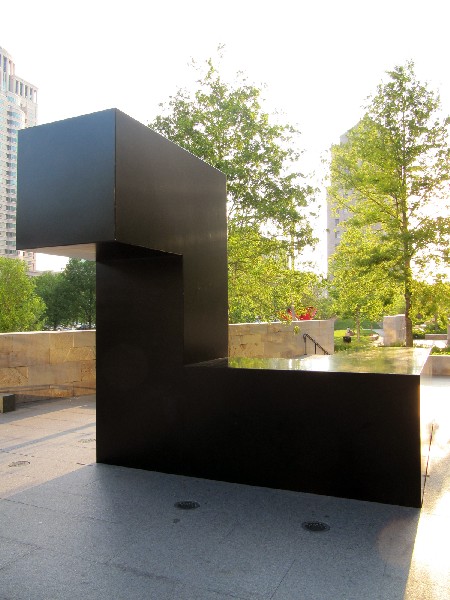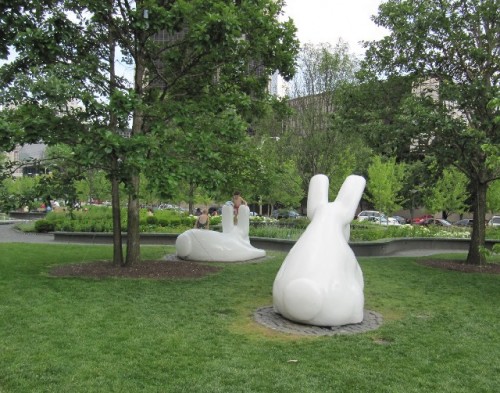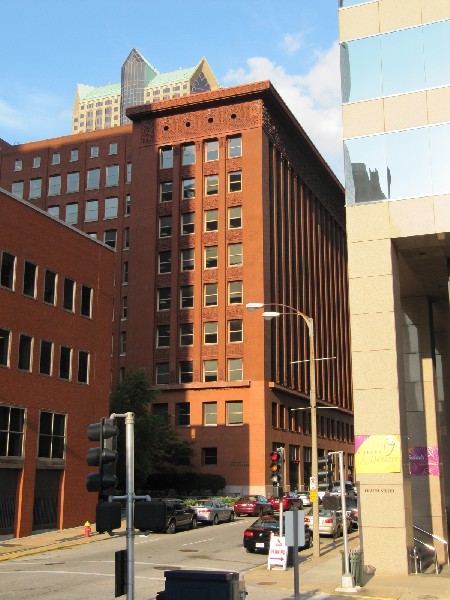Meet Me in St. Louis
Connecting with David Bonetti
By: Charles Giuliano - Oct 08, 2010
According to Astrid Hiemer’s “Roads of North America” a diary and photo album of our 6,500 miles, month long tour, we arrived in Saint Louis on June 1.
For the second time in our cross country travel we would connect with a friend. David Bonetti, the now retired art critic for the St. Louis Post Dispatch, is a colleague of many years. We are graduates of Brandeis University but a few years apart. For a time, he was the art critic for the Boston Phoenix. Then he departed for a stretch in San Francisco working for both the Chronicle and Examiner. There he was part of the arts staff which includes another former Boston Phoenix art critic, Ken Baker.
When the Chronicle and Examiner merged Baker was the senior art critic. David has good words about working under Baker and sharing assignments. Bonetti took the buyout. I tipped him off about the job in St. Louis. Later, during a trip to Boston, he treated me to a prime rib dinner at the venerable Durgan Park. It was one of his favorite hangouts.
During the time that David and I were both active art critics in Boston he was the best possible colleague. We were fiercely competitive and critical of one another. He is one of the most gifted gossips on the planet and always had an inside scoop. Our late night chats were just delicious and often playful, dishy, and lewd.
Perhaps we have matured since then. Certainly we have aged. His stories are still hilarious. Both his mirth and girth appeared to have expanded. Oh, well, moi aussi.
While approaching St. Louis there was a lot of phone tag and e mailing. We wanted advice on where to stay but he didn’t know much about motels as he never had to stay in one. There was, however, an interesting option. His high rise, modernist, apartment building had one unit, a penthouse, available for rent to friends of tenants. It was available, at $50, for just one night. Luckily, the precise day we were visiting.
It was so spacious and well appointed that we could have moved in for a month. There was a full kitchen and nice bathroom with master bedroom, living room, and cable TV. Not that we had time to watch.
From the balcony we looked down on the cathedral. Left and right David pointed out the sights. We got settled and went off to explore.
It started with a walking tour of the neighborhood. For an inner city the homes were luxurious and indicated an era when the city was wealthy. It sported one of the first gated communities.
The day was toasty as we ambled along enjoying his running commentary. He was anxious to point out the former homes of such famous residents as T. S. Eliot, Tennessee Williams, and William Burroughs. All within walking distance. Of course, interspersed with tons of information and witty insights.
By then we were famished and struggling with the heat and humidity. We ended in a commercial area and the garden of an upscale Italian restaurant for an elegant lunch.
Leaving us, he went off to get his car. We piled in and were off to the St. Louis Art Museum. It is under renovation but there was much to see and enjoy. With a guided tour from the city’s distinguished art critic no less.
In a large gallery of British and American portraits, from a distance, he pointed to a large portrait of a British Lord in regalia. He tried to stump me. “Take a guess who that’s by” he said. “Come on take a wild guess.”
Looking long and hard, but far enough away not to read the label, I said “Looks like a Copley from his British period.” David blanched. Dead on.
I took over and lectured on the Binghams. We were back to our usual banter and one upmanship. What fun. How I had missed that.
In the older art history books the three, famous, St. Louis paintings by George Caleb Bingham, 1811-1879, one of America’s greatest 19th century genre painters, were owned by a bank. They are now in the collection of the museum. How timely, in view of the current election and the rise of the fringe, whacko Tea Party. The trio of works “Stump Speech” “County Election” and “Verdict of the People” speak volumes about democracy in America.
We also viewed Bingham’s self portrait and two of his famous river paintings “Rivermen Playing Cards” and “Jolly Flatboat Men in Port.” It is worth the trip to St. Louis just to enjoy these great masterpieces of American art and politics. Not on view was his “Captured by Indians.”
There were many other fine works including rare 19th century sculptures by women, Edmonia Lewis (African American), and Harriet Hosmer. We were pleased to find a rare Seurat landscape, a couple of strong works by van Gogh, Monet landscapes, a Cezanne Bather, and Gaugin from the Brittany period.
By then it was tea time. He drove us to the gorgeous City Garden. It is a paradigm of an urban sculpture garden. There were beautifully sited contemporary works and fountains. Immediately, it became apparent that there was no way to keep families and kids from bathing in the fountains. Wisely, the city has hired guards to supervise, so we found the fountains full of delighted kids.
We repaired to the terrace of a restaurant with a view of the sculptures. There was a large Maillol nude in a pool of water. On a nearby wall was a Leger bronze relief. It was great to kick back with tea and champagne.
Casually he turned and pointed to the street behind us. “That a Louis Sullivan building” he said. “That one over there is a Phillip Johnson.” There was a ball game going on, just a block away, and we could hear the roar as the Cardinals scored.
The Wainwright building by Sullivan was built in 1890-91. Typically, it combines the vertical aesthetic of steel frame construction, Sullivan was a pioneer and master of the skyscraper, as well as, his decorative designs and façade ornamentation. This was a generation before the Mies mantra of “Less is More” that stripped modernism of decoration. The red veneer of sandstone was brilliant in the afternoon sun. David insisted that I take a photo of the red haired Astrid against the red of Sullivan’s building.
There was one more stop of the tour. Of course he knew just where to park to get the best access to the famous St. Louis Arch. It is in a park at the edge of the river. There was an enormous barge making its way recalling Bingham’s flatboat men.
It was time for dinner and we suggested pizza. A great choice as he knew of a restaurant with the best pies this side of Naples.
We had schnapps in his apartment to wind down the day and took in his collection of books and art. He was mulling over what to discard and what to pack. By now, he has resettled in Brookline. How fortune we were to visit and share with him a taste of St. Louis. Thanks David. We needed that.




